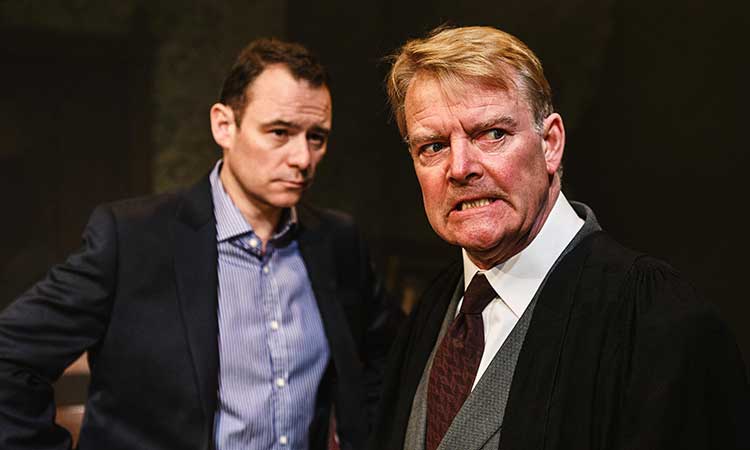
The Small Hand
Grand Opera House, York, October 27
If there’s something I appreciate the older I get, it’s the place of the ghost story in horror and the use of story telling, shock and suspense to create something genuinely enjoyable to watch, read or listen to.
In this instance, The Small Hand – an adaption of another creepy novel by The Woman In Black author Susan Hill – combines all of these things and more to create a play that caught my interest, kept it, and left me wondering what on earth had just happened.
Out of all possible reactions, this is what you want from a spooky story.
The play follows the wanderings of Adam Snow – an art dealer who finds himself drawn towards the old abandoned White House… only to feel the small, cold hand of child take his own – even though there is no one there.
As he becomes plagued by nightmares and panic attacks, and the figure of a small boy, he realises there is more to the house than he thought.
Andrew Lancel, who plays Adam as the ‘death of a salesman’ type in denial, is a constant, believable presence in the play.
You are taken in by his unobtrusive yet elegant persona and he appears battered around by events like any good main character should be, without being boring or fading into the background.
Andrew’s stage presence is helped by the fact there are only three speaking parts in the play. Diane Keen and Robert Duncan take on all the supporting roles from Adam’s therapist, to his brother Hugo, to an exuberant American fellow art dealer and finally a Scottish conductor on the train.
With a poor cast, this play would inevitably fail to make an impact. But Duncan and Keen fill the spaces around Adam’s rambling and panicking with life, wit and wonderful performances of a great script.
Keen is particularly impressive as Adam’s client’s wife, and Duncan as a hard-nosed detective trying to get the full story.
When Adam comes to his ‘clients’ in Sussex and ends up talking about the White House, saying it was on the market, Diane remarks – in horror – that she hopes it won’t be another Sainsbury’s.
Jokes like these are few and far between, but these brief moments of light heartedness are appreciated in a roller coaster of creepy children, flashing lights and screeching birds.

This play is not for the faint hearted – it’s quite genuinely frightening, and makes you jump out of your seat on more than one occasion.
Clive Francis’ adaptation, considering the amount of different places that are alluded to within the play, works incredibly well.
It’s just confusing enough to be interesting, and doesn’t treat the viewer like an idiot.
You find yourself thinking about what the answer to Adam’s dreams might be, and yet you don’t want to find out, as all the fun is in being dragged along with the narrative.
None of the adaptation, the cast and the story would be half as effective was it not for the set design, sound and lighting.
To create a successful ghost story there needs to be an atmosphere of suspense – portrayed well by sound designer Dan Samson.
Lighting designer Nick Richings and Nina Dunn, responsible for the projections, combined to eerie effect. The many different projections of backdrops to create the illusion of the different places visited, and the combination of dark clouds racing across the screen behind Adam and the sounds of a storm, is just a brilliant start to a traditional ghost story.
Forget The Woman In Black; The Small Hand is what this genre is all about.
The Small Hand is at Grand Opera House until Saturday, November 1
